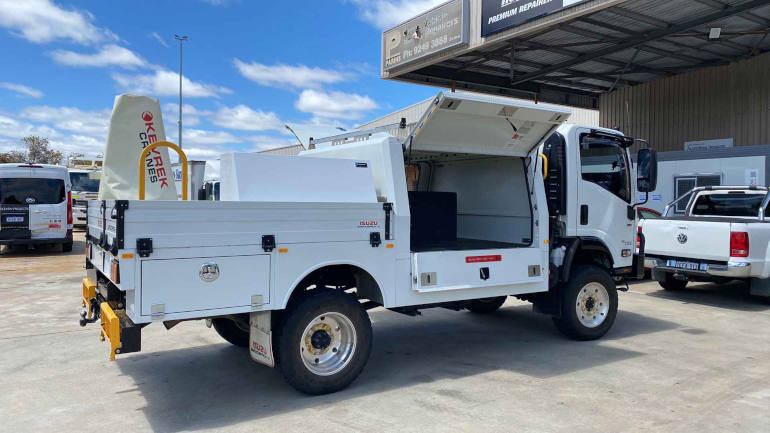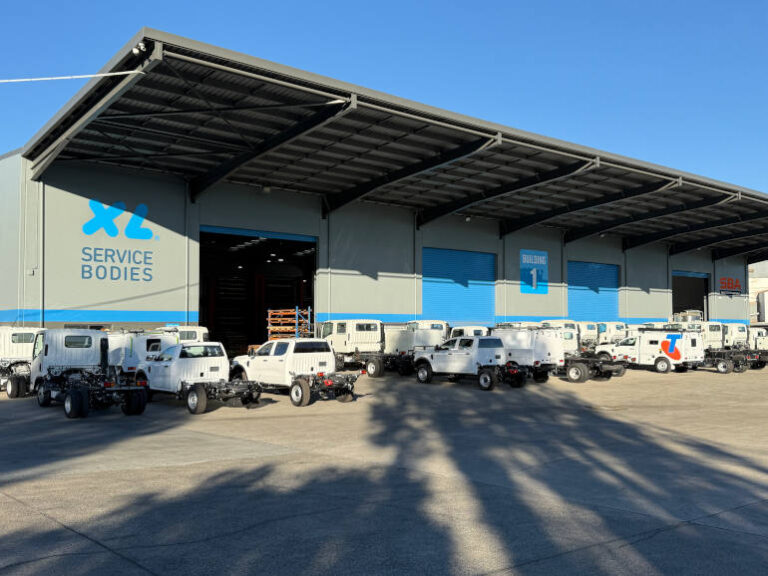When you look at a modern service body fitted to a light truck or ute in Australia today, it’s easy to forget that this now-familiar product was once an innovation borrowed from North America. And for XL Service Bodies, that journey began over three decades ago — with a chance visit to a trade show in Atlanta.
A Family Business with an Engineering Vision
As JP Shelburn, Managing Director of XL Service Bodies, explains, the story starts with the company’s founder, Nick Korganow— his father-in-law — during a “quasi-retirement” phase. “His doctor told him he needed more stress in his life,” JP joked. Being an engineer at heart, Nick decided to travel to Europe and North America, attending trade and automotive shows. It was at the National Truck Equipment Association (NTEA) Work Truck Show in Atlanta in 1989 that he first saw purpose-built service bodies as a dominant feature of light-duty trucks.
“In North America, service bodies have existed since the earliest days of pickups. There’s even a company claiming a 120-year history — going back to stagecoach times,” JP noted. Originally designed to mitigate the risk of unsecured loads on the road, service bodies evolved into a safety-driven product category in the litigious U.S. market.
Nick returned to Australia inspired, noting that there was no equivalent offering for popular local vehicles like the Ford Ranger and Mazda BT-50. The idea was met with enthusiasm from his wife, who saw an opportunity to write off their travel expenses to R&D — and keep Nick busy. What began as a hobby soon snowballed.
A Breakthrough with Telstra
The turning point came when Telstra’s fleet team wanted to trial a ute with our service body to compare it with their Hiace vans — more than 32 years ago. “We created the first Telstra service body and we still supply Telstra today,” JP said.
Since then, XL has grown into a major supplier, known for producing highly engineered and durable service bodies — not simply “white metal boxes,” as JP puts it with a smile.

Building to OEM Standards
Today’s service bodies are far from simple sheet metal assemblies. XL invests heavily in advanced manufacturing and engineering to meet both fleet and OEM standards. JP emphasised that the company has invested more than $8 million in the past 18 months alone, maintaining a state-of-the-art sheet metal facility. They work exclusively with premium partners such as Salvagnini and Amada.
“Building service bodies isn’t what it used to be,” JP said. “We now deal with complex CAN bus electronics, custom wiring harnesses, and global supply chains. Our builds undergo finite element analysis (FEA), accelerated vibration testing, and wind tunnel validation.”
It’s this attention to detail that earned XL approval under programs such as Ford QVM (Qualified Vehicle Modifier) and the forthcoming Ford Pro Converter Program. The company is also a Tier 1 Gold supplier under Isuzu’s IBAP (Isuzu Body Builder Accreditation Program) accreditation.
Design with Real-World Experience
A key differentiator for XL is their engineering-led approach to design. JP highlighted how their team — many with decades of tenure at XL — understand the practicalities of vehicle dynamics, load distribution, and fleet requirements.
“Sometimes, fleet managers come with requests that simply aren’t safe — such as wanting to fit an extra-wide body or place a microwave at head height,” he said. XL often works with fleet risk managers and safety engineers to ensure that designs meet Chain of Responsibility (CoR) obligations and practical usability standards.
The company also pioneered a payload calculator on its website over a decade ago, helping fleet managers visualise actual load impacts. JP shared one example of a project they declined because the customer insisted on a 1900mm-wide body on a light ute — a design XL knew would cause issues. The customer proceeded with another builder, only to later experience problems with damaged infrastructure and had to replace the bodies.
Innovation Driven by Safety and Sustainability
Safety innovation remains a priority. XL was integrating steps with three-point access and engineering gas-vented compartments long before such features became common. They are now adding speech-based alerts for open doors or active beacons — taking driver warnings beyond simple audible alarms.
The company is also investing in circular economy principles. For example, they developed a process to recycle painted OEM bumpers removed during service body installations — a step previously ignored by many. XL also crushes and recycles its own test bodies.
Material innovation plays a role too. The company now uses carefully sourced aluminium for many body panels to reduce weight and improve durability, ensuring consistent material properties by purchasing directly from mills.
From a family idea sparked by a visit to Atlanta, to a leader in engineered service bodies aligned with major OEM programs, XL Service Bodies exemplifies how innovation, safety, and customer insight can transform an industry.
And for fleet managers planning their next service body build, JP has one final tip: “Talk to your body builder early — and be realistic about what you’re asking for. You don’t want to find out too late that your microwave or your wide body causes more trouble than it’s worth.”






